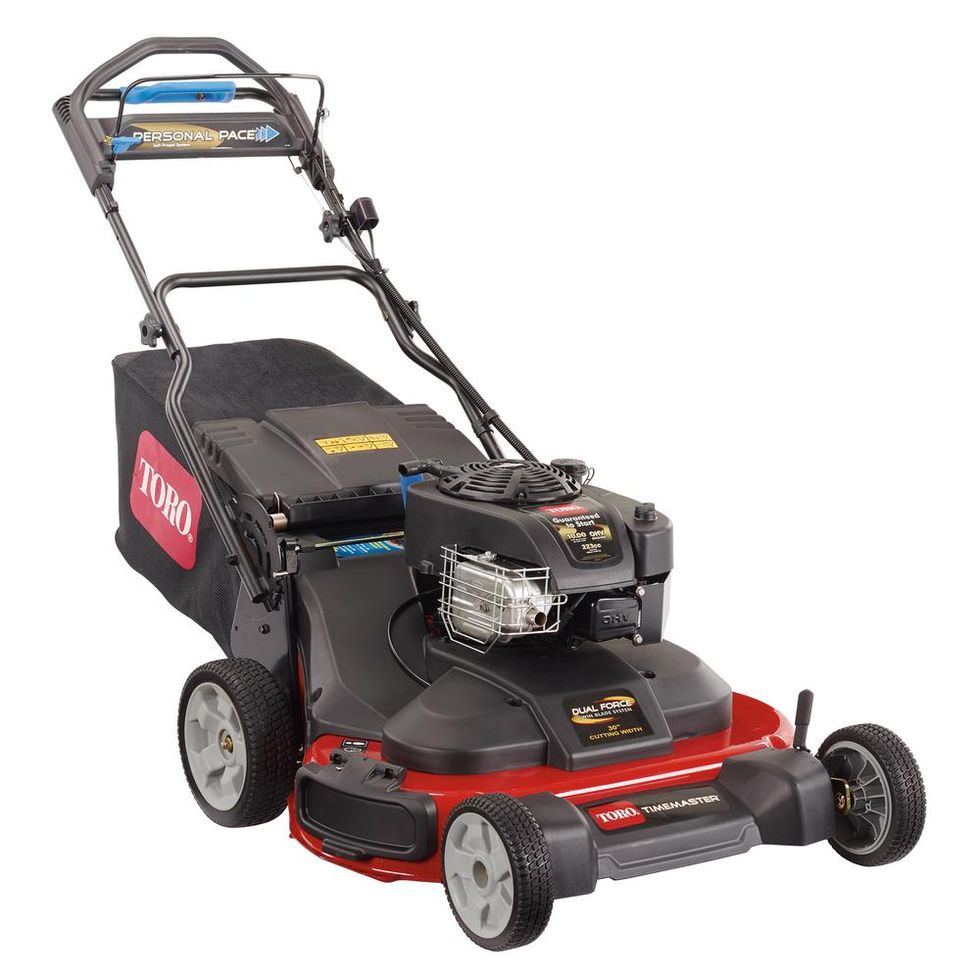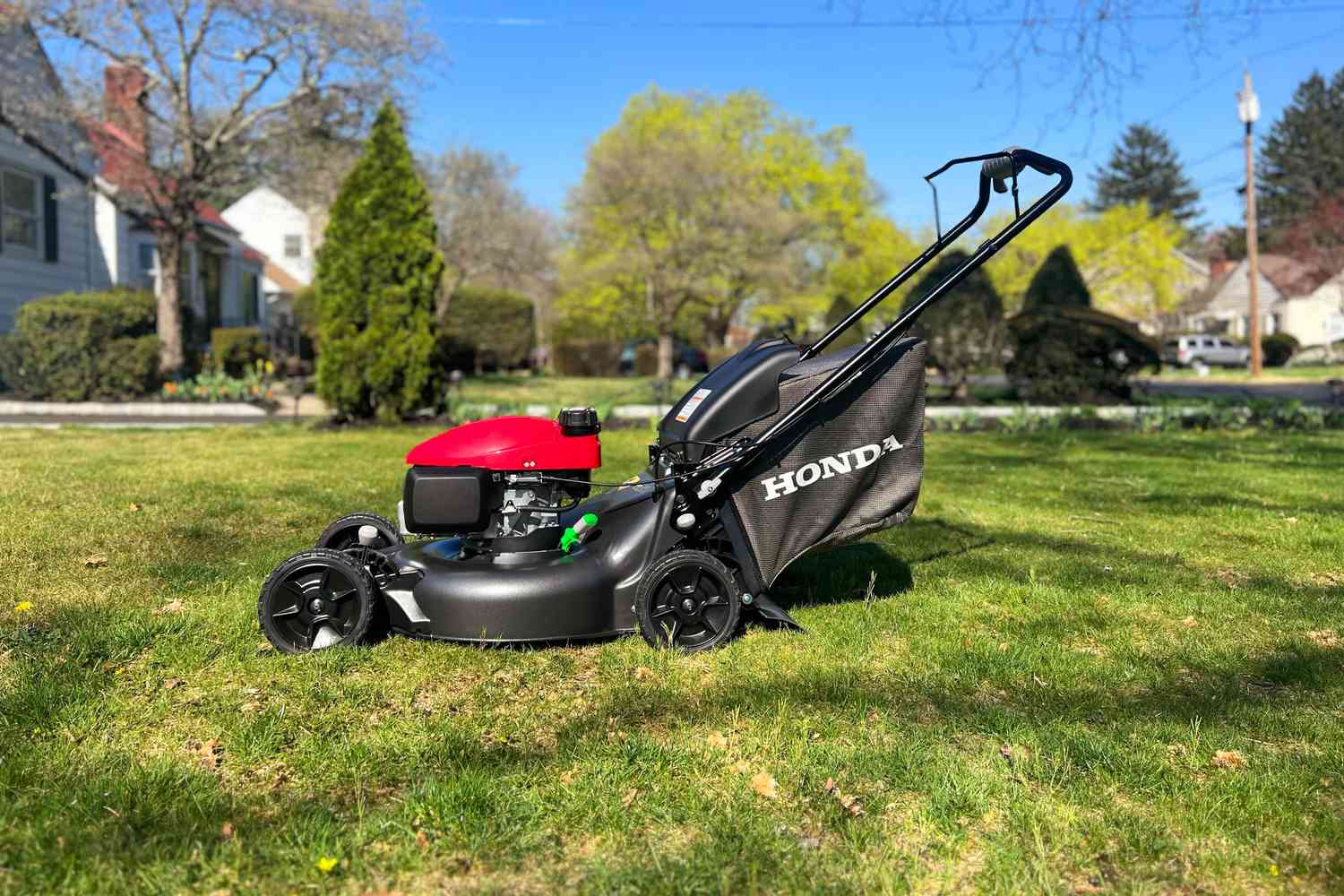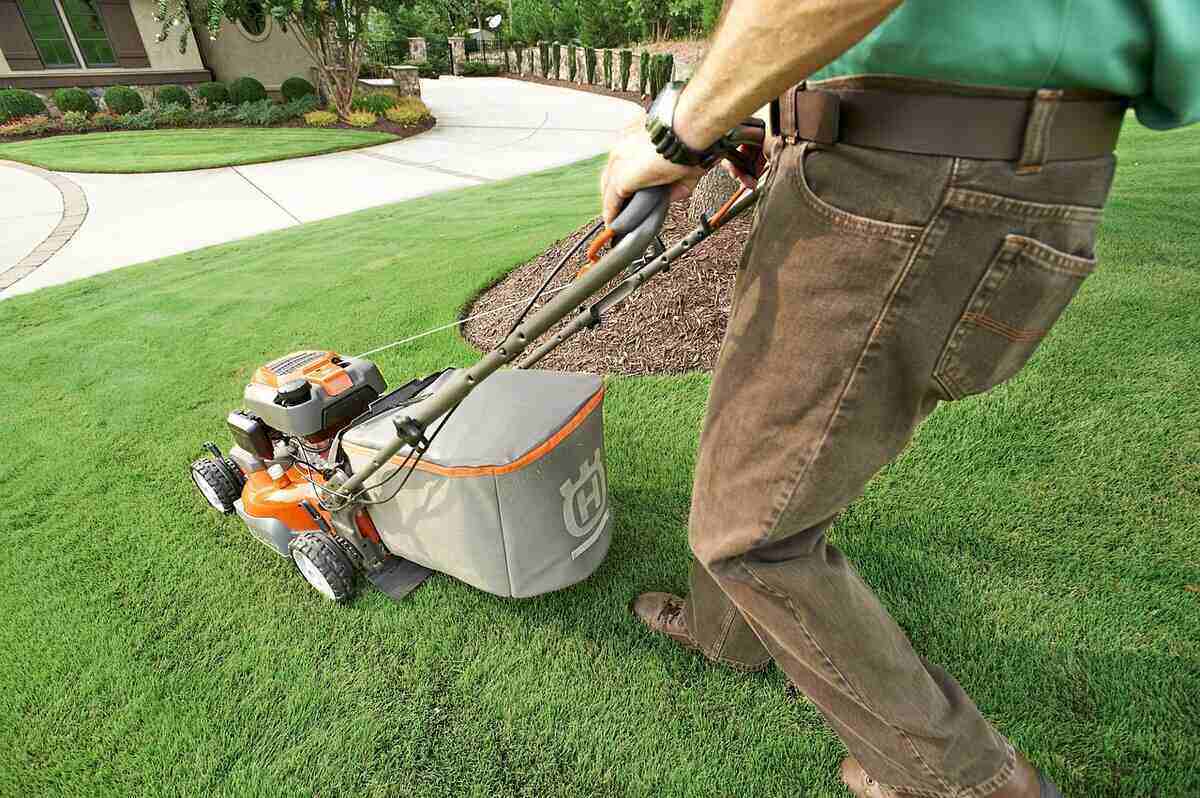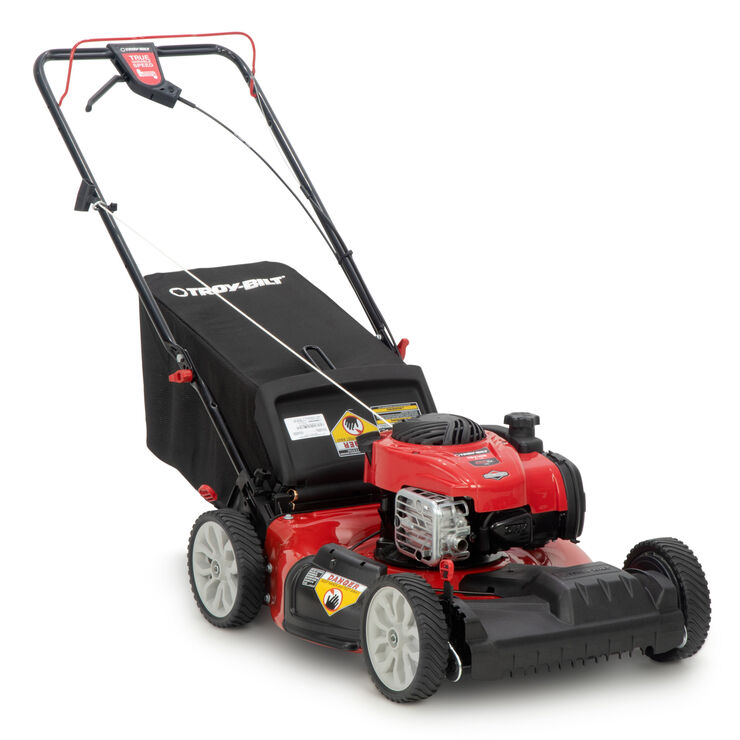
In the realm of lawn care, where lush green carpets meet the demands of homeowners and enthusiasts, self-propelled lawn mowers stand as a testament to innovation and convenience. These ingenious machines, imbued with the power of self-propulsion, have transformed the way we approach lawn maintenance, replacing strenuous pushing with effortless gliding. Embark on a journey to uncover the intricacies of self-propelled lawn mowers, exploring their mechanisms, benefits, and the diverse range of options available to suit every lawn care need.
Unveiling the Essence of Self-Propulsion
At the heart of a self-propelled lawn mower lies a captivating blend of mechanical ingenuity and practical application. Unlike their push mower counterparts, self-propelled models harness the power of an internal combustion engine or an electric motor to propel themselves forward, eliminating the need for manual pushing. This transformative feature revolutionizes lawn care, allowing users to focus on steering and maneuvering the mower rather than expending physical effort.
Delving into the Mechanisms of Self-Propulsion
The power of self-propulsion manifests in a variety of forms, each tailored to deliver optimal performance and cater to specific needs. Gasoline-powered self-propelled lawn mowers, the most common type, utilize a traditional internal combustion engine to generate power. This power is then transmitted to the wheels via a gear-driven or hydrostatic transmission system, setting the mower in motion. Electric self-propelled lawn mowers, on the other hand, draw their energy from a battery pack, powering an electric motor that drives the wheels. Hybrid self-propelled lawn mowers, a testament to technological advancement, combine the efficiency of an electric motor with the extended runtime of a gasoline engine, offering a versatile solution.
Transmission Systems: The Power Brokers
The transmission system serves as the intermediary between the power source and the wheels, translating engine power into propelling force. Gear-driven transmissions, characterized by their simplicity and affordability, employ a series of gears to transfer power to the wheels. Hydrostatic transmissions, renowned for their smooth operation and variable speed control, utilize hydraulic fluid to transmit power, providing a more user-friendly experience. Hybrid transmissions, a fusion of gear-driven and hydrostatic technologies, offer a balance of efficiency and performance.
Control Mechanisms: At Your Command
Self-propelled lawn mowers empower users with intuitive control mechanisms, allowing them to regulate the mower’s speed and direction with precision. Traditional handle-based controls, often found on rear-wheel drive models, provide a familiar and straightforward interface. Lever-based controls, typically featured on front-wheel drive and zero-turn mowers, enhance ergonomic comfort and offer more precise speed adjustments. Electronic controls, the epitome of modern technology, enable users to seamlessly control the mower’s speed and direction using buttons or touchscreens.
A Spectrum of Self-Propelled Lawn Mowers: Tailored to Every Need
The world of self-propelled lawn mowers encompasses a diverse range of options, each designed to address specific lawn care requirements and preferences. Rear-wheel drive mowers, the most common type, offer classic maneuverability and handling, making them ideal for flat lawns and straightforward mowing tasks. Front-wheel drive mowers, equipped with powered front wheels, excel at tackling slopes and uneven terrain, providing superior traction and stability. All-wheel drive mowers, the pinnacle of power and grip, conquer the most challenging landscapes, making them suitable for large properties and demanding mowing conditions. Zero-turn mowers, renowned for their exceptional maneuverability, enable tight turns and precise edging, transforming lawn care into an art form.
Informed Decision-Making: Choosing the Right Self-Propelled Lawn Mower
Selecting the ideal self-propelled lawn mower demands a careful assessment of individual needs and lawn care requirements. Lawn size plays a crucial role in determining the appropriate mower type, with larger lawns benefiting from the efficiency of all-wheel drive models, while smaller spaces may find rear-wheel drive mowers sufficient. Terrain considerations influence the choice between rear-wheel drive for flat lawns and front-wheel or all-wheel drive for slopes and uneven surfaces. Personal preferences, such as the desired level of maneuverability and handling, further guide the selection process.
Effortless Lawn Care: The Benefits of Self-Propelled Lawn Mowers
Self-propelled lawn mowers revolutionize lawn care by introducing a host of compelling benefits that elevate the mowing experience. Reduced physical strain and fatigue stand as a hallmark advantage, as the mower does the work, not the user’s arms and legs. This translates into increased mowing speed and efficiency, allowing users to cover more ground in less time, completing tasks faster. Enhanced maneuverability and handling empower users to navigate slopes, obstacles, and tight spaces with ease, making lawn care less demanding and more enjoyable.
Features to Enhance Your Self-Propelled Mowing Experience
Beyond the core functionalities, self-propelled lawn mowers offer a variety of features that further elevate the mowing experience and cater to diverse user preferences.
-
Cutting Width: This refers to the swath of grass cut in a single pass by the mower. Wider cutting widths translate to less time spent mowing larger lawns, while narrower widths provide superior maneuverability for intricate mowing tasks or navigating around obstacles.
-
Cutting Height Adjustment: Precise control over grass height is vital for maintaining a healthy lawn. Self-propelled lawn mowers typically offer multiple cutting height settings, allowing users to adjust the blade position to suit the desired grass length and seasonal conditions.
-
Mulching Capabilities: Mulching lawn mowers shred grass clippings into fine particles that decompose and return nutrients to the soil, promoting healthy grass growth and reducing the need for fertilizer. This environmentally friendly feature eliminates the need for bagging or raking grass clippings, saving time and effort.
-
Bagging Options: For those who prefer a cleaner mowing experience or have specific lawn care requirements, self-propelled lawn mowers can be equipped with grass collection bags. These bags capture grass clippings during mowing, allowing for easy disposal or composting.
-
Additional Features: Modern self-propelled lawn mowers often boast a range of additional features that enhance convenience and functionality. Side discharge allows grass clippings to be deposited to the side of the mower, while washout ports simplify cleaning after mowing. LED headlights illuminate the mowing path during low-light conditions, and cruise control maintains a consistent mowing speed for effortless operation.

Operating and Maintaining Your Self-Propelled Lawn Mower for Peak Performance
Ensuring the longevity and optimal performance of your self-propelled lawn mower requires a commitment to proper operation and maintenance practices.
-
Pre-Mowing Checklist: Before embarking on your mowing adventure, take a few moments to perform a pre-mowing inspection. Verify that tire pressure is at the recommended level, ensure blades are sharp for clean cuts, and check engine oil levels for optimal performance.
-
Mowing Techniques: For a smooth and efficient mowing experience, maintain a consistent speed while avoiding overloading the mower by attempting to cut too much grass at once. Varying mowing patterns helps prevent uneven cutting and promotes healthy lawn growth.
-
Regular Maintenance: Extend the lifespan of your self-propelled lawn mower by adhering to a regular maintenance schedule. Clean the mower thoroughly after each use, removing grass clippings and debris from the undercarriage and blade. Sharpen blades regularly to ensure clean cuts and prevent grass tearing. Regularly check for any mechanical issues and address them promptly.
-
Winter Storage: If you reside in a region with harsh winters, take steps to properly store your self-propelled lawn mower during the off-season. Empty the fuel tank to prevent deterioration, disconnect batteries to avoid discharge, and store the mower in a dry, sheltered location to protect it from the elements.

Prioritizing Safety: Essential Precautions for Operating Self-Propelled Lawn Mowers
Operating a self-propelled lawn mower requires adherence to safety protocols to ensure a hazard-free mowing experience.
-
Protective Gear: Always wear appropriate protective gear while mowing. This includes eye protection to shield your eyes from flying debris, hearing protection to mitigate noise exposure, and sturdy footwear for secure footing on uneven terrain.
-
Mind Your Surroundings: Maintain a safe distance from children and pets during operation to prevent accidental injuries. Avoid mowing on wet or slippery surfaces, as this can lead to loss of traction and potential accidents. Be aware of your surroundings and watch out for obstacles or uneven terrain hazards.
-
Safe Operation Practices: Follow the manufacturer’s safety instructions carefully. Familiarize yourself with the mower’s controls and operation procedures before starting. Never leave a running mower unattended, and always disengage the self-propulsion mechanism before stopping or turning the mower off.
By prioritizing safety and adhering to operational guidelines, you can ensure a secure and enjoyable mowing experience with your self-propelled lawn mower. Remember, a well-maintained mower not only performs optimally but also contributes to a safer and more efficient lawn care routine.